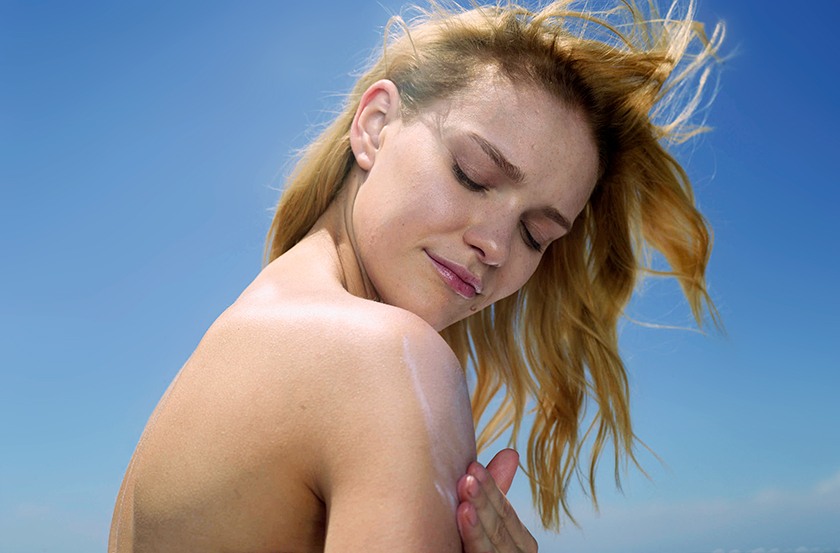Physical vs. Chemical Sunscreen Ingredients
There are two types of sunscreen ingredients1 that effectively help prevent sunburn: Mineral sunscreen filters (also known as physical sunscreen) and chemical sunscreen filters.
Mineral sunscreen ingredients form a barrier on the surface of the skin that helps reflect UV rays away from the skin. The only FDA-approved mineral sunscreen ingredients are zinc oxide and titanium dioxide. These physical sunscreen filters are ideal for both daily and prolonged, intense sun exposure because of their broad spectrum protection3 against both UVA and UVB rays. Mineral sunscreen filters are effective for reflecting UV rays when applied as directed, which includes applying a generous amount (one ounce for the entire body) 15 minutes before sun exposure.4,5
On the other hand, chemical sunscreen ingredients penetrate the top layers of the skin to absorb UV rays. These filters absorb damaging UV rays before they can damage the skin. These sun protection ingredients include oxybenzone, avobenzone, octisalate, octocrylene, homosalate and octinoxate. Depending on the formulation, chemical sunscreens may be easier to rub into the skin and less likely to leave a white cast. Chemical sunscreen filters should also be applied 15 minutes before sun exposure.4,5
Mineral Sunscreen vs. Chemical Sunscreen: Which is right for you?
Any UV protection labeled as “broad spectrum” has been tested and shown to help shield the skin from both UVA and UVB rays, yet different skin types have different needs1. The U.S. FDA has approved both physical/mineral and chemical sunscreen active ingredients, deeming them safe and effective. Talk to your dermatologist before deciding between a physical vs. chemical sunscreen—and be sure to select a product that you can commit to using every day.

- https://www.aad.org/public/spot-skin-cancer/learn-about-skin-cancer/prevent/say-yes-to-sun-protection
- http://practicaldermatology.com/2018/04/a-closer-look-at-sunscreens-insights-innovations-and-inaccuracies
- https://www.fda.gov/Drugs/ResourcesForYou/Consumers/BuyingUsingMedicineSafely/UnderstandingOver-the-CounterMedicines/ucm239463.htm#types
- Premi, S., Wallisch, S., Mano, C. M., Weiner, A. B., Bacchiocchi, A., Wakamatsu, K., Bechara, E. J. H., Halaban, R., Douki, T., Brash, D. E. (2015). Chemiexcitation of melanin derivatives induces DNA photoproducts long after UV exposure. Science, 347(6224), 842-847.
Hughes, M. C.; Williams, G.M.; Baker, P.; Green, A. C. (2013). Sunscreen and Prevention of Skin Aging: A Randomized Trial. Annals of Internal Medicine, 158(11), 781-790.
Latha, M. S., Martis, J., Shobha, V., Sham Shinde, R., Bangera, S., Krishnankutty, B., Bellary, S., Varughese, S., Rao, P., … Naveen Kumar, B. R. (2013). Sunscreening agents: a review. The Journal of Clinical and Aesthetic Dermatology, 6(1), 16-26.
Faurschou, A. and Wulf, H. (2007). The relation between sun protection factor and amount of sunscreen applied in vivo. British Journal of Dermatology, 156, 716-719.
Beyer, D., Faurschou, A., Hædersdal, M., Wulf, H. (2010). Clothing reduces the sun protection factor of sunscreens. British Journal of Dermatology, 162: 415-419.
Rai, R., Srinivas, C. R. (2007). Photoprotection. Indian Journal of Dermatology, Venereology and Leprology, 73(2), 80–85. - Baumann, L. (2009) Cosmetic Dermatology: Principles and Practice (pp.245-254). New York: McGraw-Hill Medical
